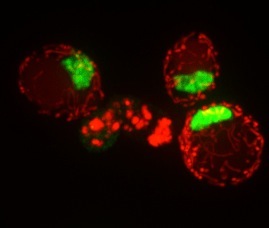HOME RESEARCH LAB MEMBERS PUBLICATIONS LAB PHOTOS CONTACT


Research


The labs interests concern ancient biological mechanisms of eukaryotic cellular differentiation. As a model, we use the sporulation program of budding yeast, Saccharomyces cerevisiae. During yeast sporulation, diploid cells undergo meiosis and then execute a differentiation program of the haploid meiotic products into long-lived gametes called spores, which are packaged into the well-known yeast tetrad. Much of the labs work is focused on the roles of epigenetic control of gene expression during yeast spore differentiation. Specifically, we are interested in how
Complimenting our studies of spore differentiation, we have recently discovered that yeast meiotic products, effectively immature gametes, can execute an alternative developmental fate, which we are calling sporoptosis. It has been known for decades that under conditions of nutritional stress, sporulating yeast will
histone modifications, and the conserved families of proteins that regulate their deposition, removal, and interpretation, function to control the gene expression program underlying spore differentiation. Our findings have revealed that ancient families of epigenetic regulators control yeast differentiation in a manner that is similar to that of mammals, highlighting yeast sporulation as an underutilized model for
understanding mechanisms of mammalian differentiation. We are particularly interested in how Jumonji-family histone demethylases modulate gene expression during sporulation with an emphasis on the JARID subfamily, which is known to control human embryonic stem cell programs. We have determined that the yeast JARID ortholog, Jhd2, controls the execution of spore differentiation in an analogous
fashion as in human ESCs. Moreover, the gene targets of JARIDs during both yeast and human cellular differentiation indicate that reprogramming of the metabolic organelles may be an ancient underlying event of eukaryotic differentiation.
undergo normal meiosis but fail to package all of the haploid nuclei into spores. Using cell biological, genetic, and molecular methods, we have discovered that the unpackaged meiotic nuclei are actively destroyed through a process that exhibits intriguing similarities with mammalian apoptosis. As with mammalian apoptosis, mitochondria seem to play a crucial role in sporoptosis.
